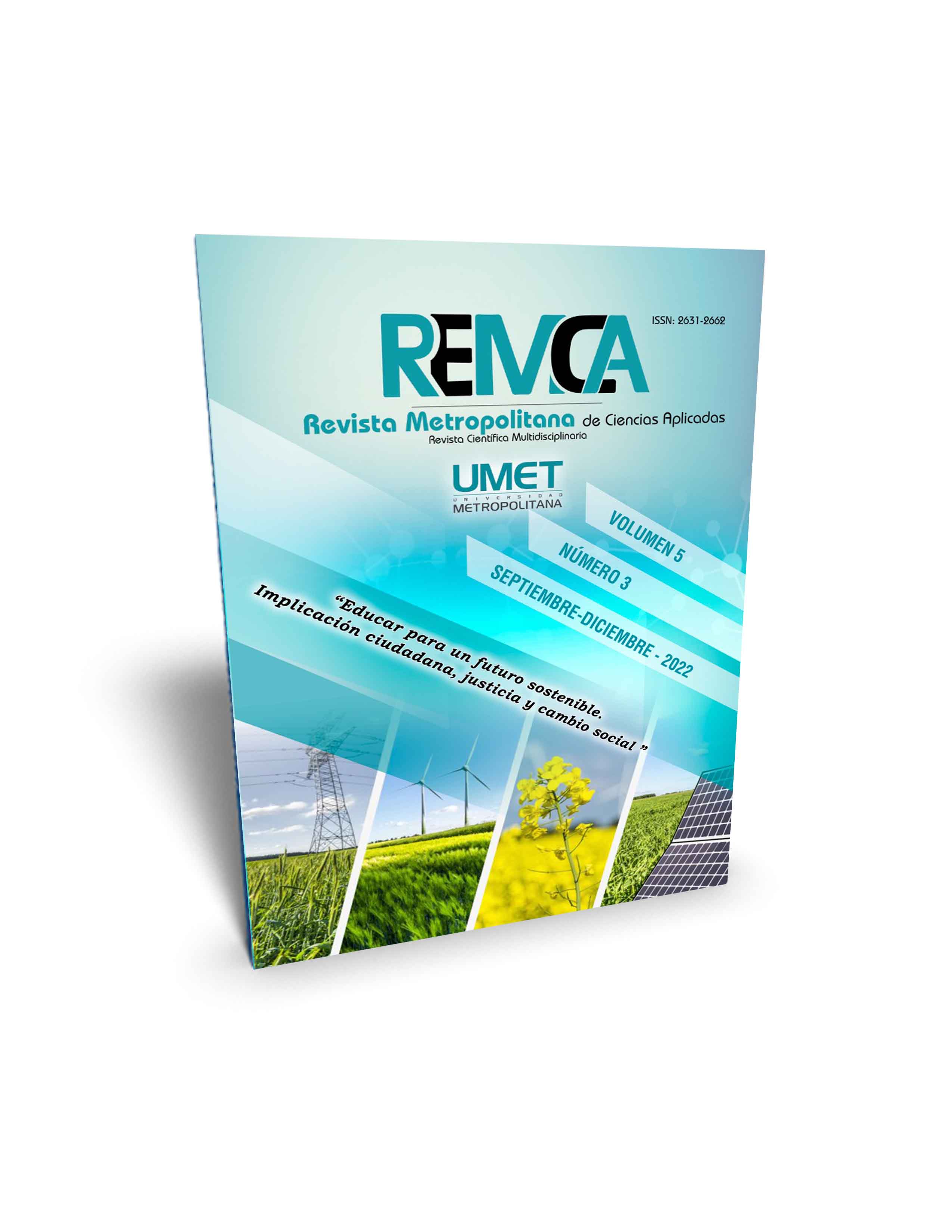Soils, vegetation and erosion in a toposequence of the farm la estrella municipality Machiques de Perijá, state Zulia, Venezuela
DOI:
https://doi.org/10.62452/dktcqp27Keywords:
Erosion, soil degradation, vegetation, MachiquesAbstract
The work was carried out with the objective of determining the level of soil degradation by measuring soil and vegetation parameters as an expression of desertification under dry subhumid mesoclimate conditions in the La Estrella farm, Machiques de Perijá municipality, Zulia, Venezuela. Soil and vegetation variables were sampled in a band of 20 m x 250 m, sectioned into three parts: top, middle slope and inter-hill valley. The band in turn is subdivided into 1x1 m plots, randomly choosing 33 of them, in order to obtain information on the soil and vegetation. 15 families and 20 plant species were registered in the valley; 16 and 32 in the middle slope and the top, without vegetation, for a total of 20 families and 39 species; In addition, it was determined that the dynamics of the vegetation cover is reduced and causes the appearance and expansion of areas devoid of vegetation called peladeros, loss of horizon A and part of B, identifying the levels of soil degradation. The indices of vegetation cover, soil productivity and risks of water erosion were calculated, from which four classes of soil degradation were defined: A, with little or no; class B, moderate; C, heavily degraded soils and D with severe degradation. Taxonomically three subgroups were identified: Fluventic Endoaquepts at the top; Typic Paleustalfs in the middle slope, and in the intercolinar valley, Fluventic Dystrustepts
Downloads
References
Centro de Información de las Naciones Unidas. (2011). Desertificación. ONU. http://www.cinu.org.mx/temas/des_sost/desert.htm.
Colombia. Instituto de Hidrología, Meteorología y Estudios Ambientales. (2015). Síntesis. Estudio nacional de la degradación de los suelos por erosión en Colombia. IDEAM. http://documentacion.ideam.gov.co/openbiblio/bvirtual/023646/Sintesis.pdf
Figueroa, V. (2011). Los bosques secos de la costa oriental del lago de Maracaibo, estado Zulia. Venezuela. BioLlania Edición Esp., 10, 189-196.
Figueroa, V. (2017). Degradación del suelo, vegetación y desertificación, del sector san Julián, municipio Machiques de Perijá, Zulia, Venezuela. (Tesis doctoral). Universidad de Zulia.
Funk, V., Hollowell, T., Berry, P., Kelloff, C., & Alexander, S. (2007). Checklist of the Plants of the Guiana Shield (Venezuela: Amazonas, Bolivar, Delta Amacuro; Guyana, Surinam, French Guiana). http://www.jstor.org/stable/23493236
Hokche, O., Barry, P., & Huber, O. (2008). Nuevo catálogo de la flora vascular de Venezuela. Fundación Instituto Botánico de Venezuela. https://www.ibm.com/software/products/es/spss-stats-base
Jaimes, E. (1988). Determinación de Índices de Homogeneidad Múltiples Globales en Sistemas Pedogeomorfológicos de la Cordillera de La Costa Serranía del Litoral Central Aragua Venezuela. https://www.researchgate.net/publication/303208697.
Jaimes, E. (1994). Estimación de la Entropía Propia del Sistemas Pedogeomorfológicos mediante Índice de Homogeneidad. (Tesis doctoral). Universidad Central de Venezuela.
Jiménez Flores, L. A. (2011). Definición de un modelo Edafogeomorfológico para la identificación de necesidades de manejo y recuperación de suelos a nivel local. Caso cuenca Cañada la Gorda, Machiques Colón, estado Zulia, Venezuela. (Tesis doctoral). Universidad Politécnica de Madrid.
Organización de las Naciones Unidas para la Alimentación y la Agricultura. (2015). El suelo es un recurso no renovable su conservación es esencial para la seguridad alimentaria y nuestro futuro sostenible. FAO. http://www.fao.org/3/i4373s/i4373s.pdf
País Vasco. Departamento de Desarrollo Económico, Sostenibilidad y Medio Ambiente. (2017). Degradación del suelo. Medio Ambiente / Suelo. https://www.euskadi.eus/informacion/degradacion-del-suelo/web01-a2inglur/es/
Porta, J., López Acevedo, M., & Roquero, C. (2003). Edafología para la agricultura y el medio ambiente. Mundi Prensa Libros.
Roa, R. (2011). Director Cuencas Hidrográficas Ministerio del Ambiente. (Ponencia). Jornada de información sobre desertificación y sequía. Boulevard Sabana Grande. Caracas, Venezuela.
Sentis I. P. (2015). Problemas de degradación de suelos en América Latina: Evaluación causas y efectos. (Ponencia). X Congreso Ecuatoriano de la Ciencia del Suelo. Quito. Ecuador.
Smith, N., Mori, S., Henderson, A., Stevenson, D., & Heald, S. (2004). Florewing plants of fhe neotropics. Princeton University Press in Association with the New York Botanical Garden.
Thornthwaite, C. W. (1948). An approach toward a rational classification of climate. American Geographical Society, 38(1), 55-94.
United State Department of Agriculture. (1996). Soil survey laboratory methods manual. Version 3,0. National Soil Survey Center Natural Resources Service. USDA.
Venezuela. Comisión del Plan Nacional de Aprovechamiento de los Recursos Hídricos. (1974). Atlas del inventario nacional de tierras. Región Lago de Maracaibo. COPLANARH.
Venezuela. Ministerio de Minas e Hidrocarburos. (1956). Léxico estratigráfico de Venezuela. Editorial Venezuela Ministerio de Minas
Downloads
Published
Issue
Section
License
Copyright (c) 2022 Víctor Manuel Figueroa, Miguel Herminio Larreal Ríos, Edgar José Jaimes Cárdenas, Janeth Paulina Ulloa Morejón, Darío Javier Dueñas Alvarado (Autor/a)

This work is licensed under a Creative Commons Attribution-NonCommercial-ShareAlike 4.0 International License.
Authors who publish in Revista Metropolitana de Ciencias Aplicadas (REMCA), agree to the following terms:
1. Copyright
Authors retain unrestricted copyright to their work. Authors grant the journal the right of first publication. To this end, they assign the journal non-exclusive exploitation rights (reproduction, distribution, public communication, and transformation). Authors may enter into additional agreements for the non-exclusive distribution of the version of the work published in the journal, provided that acknowledgment of its initial publication in this journal is given.
© The authors.
2. License
The articles are published in the journal under the Creative Commons Attribution-NonCommercial-ShareAlike 4.0 International License (CC BY-NC-SA 4.0). The terms can be found at: https://creativecommons.org/licenses/by-nc-sa/4.0/deed.en
This license allows:
- Sharing: Copying and redistributing the material in any medium or format.
- Adapting: Remixing, transforming, and building upon the material.
Under the following terms:
- Attribution: You must give appropriate credit, provide a link to the license, and indicate if any changes were made. You may do this in any reasonable manner, but not in any way that suggests the licensor endorses or sponsors your use.
- NonCommercial: You may not use the material for commercial purposes.
- ShareAlike: If you remix, transform, or build upon the material, you must distribute your creation under the same license as the original work.
There are no additional restrictions. You may not apply legal terms or technological measures that legally restrict others from doing anything the license permits.




